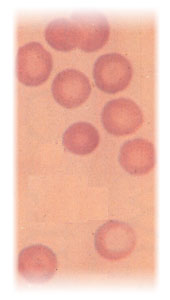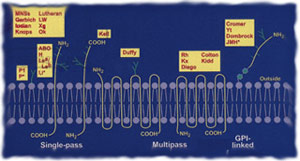

What are Blood Groups?

Enlarge Blood groups are individual differences in proteins and/or carbohydrates that make up part of the red blood cell membrane. Most of them are inherited just like you inherit eye or hair color. At one time we could count all of the known blood group antigens on two hands. The first blood group was very simple- ABO. The designation of O was suppose to mean that no antigen , ie. A or B was present on the red blood cells. Later it was discovered that the type O cells actually had another antigen which was named H (for "human"). In the 1920s, animal experiments led to the discovery of additional blood group factors which were given the letters M, N and P. There seemed to be lots of room for expansion in the early 1940s when the Rh blood group was found and the antigens were assigned the letters C/c, E/e and D (there is no d). However, by the late 1940s the single letter blood group antigens became in short supply and a new approach was taken. The last name of the first person to make a new antibody was now used to name the system, eg. Lewis, and the first two letters of the last name were used for the abbreviation, eg. Le. But even this caused problems when Mrs. Duffy and Mrs. Kidd were found. The D and K antigens had already been assigned and were too similar, so the new blood groups became Duffy (Fy) and Kidd (Jk). The blood group antigen list continued to grow in this manner until over 240 types were known. None of these terms were easily adaptable to the new computer age and so another system was designed which used numbers. However, this became cumbersome and finally in 1980 the International Society of Blood Transfusion established a Working Party for Nomenclature to consider blood group terminology. Under the direction of Dr. Fred Allen, they devised a genetically based numerical terminology. The original report published in 1990 has been periodically updated as new systems have been established and antigens properly assigned. However, the ISBT Working Party recognized the fact that "popular" terms might still be in use and has tried to incorporate that into their recommendations. In presenting the following information on blood groups we have utilized the ISBT system for both the system name and number. |